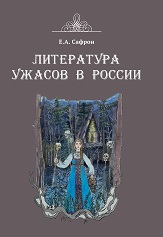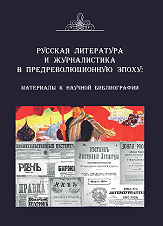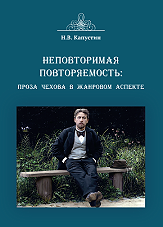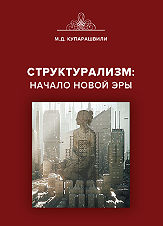The purpose of the study is to characterize the image of the “fallen man” in the story “The Eternal Husband” by F.M. Dostoevsky and in the novel “The Awakening” by Namık Kemal. The article provided a comparative analysis of this image in the mentioned works. The article was based on the hypothesis that moral norms cannot be applied only to one sex with a gender-spesific approach. The study was carried out on the basis of imagology and comparative literature. The main research materials were well-known explanatory dictionaries in Turkish and Russian, as well as literary works “The Eternal Husband” and “The Awakening”. In the study it was determined that the concept of the image of a “fallen person” applied not only to a woman but also to a man. In the work it was concluded that sometimes, in the background of the process of formation of literary images, gender stereotypes may exist in the mind. The novelty of the work lied in the fact that the term “fallen man” was first introduced into scientific circulation and used to analyze this image in the literature, its detailed description was given, the features of the “fallen man” were described using the example of the heroes of the analyzed works.
Keywords: сomparative literature, imagology, the image of a “fallen man”, Fyodor Dostoevsky, Namık Kemal, “The Eternal Husband”, “The Awakening”, gender stereotypes
References
1. Giiiar F.M. Sravnitel’noe literaturovedenie. Paris: Presses universitaires de France, 1965. 128 p.
2. Maseeva V.N. Obraz padshei zhenshchiny v otechestvennoi literature i publitsistike: K istorii voprosa // Izvestiia UrFU. Ser. 1. Problemy obrazovaniia, nauki i kul’tury. 2012. No. 1 (98). S. 67–72.
3. Türk Dil Kurumu. Türkçe Sözlük. 11. Baskının Tıpkıbasımı. Ankara: TDK Yayınları, 2019. 2763 s.
4. Kuznetsov S. Bol’shoi tolkovyi slovar’ russkogo iazyka. 2-e izd. St. Petersburg: Norint, 2000. 1536 s.
5. Efremova T.F. Novyi slovar’ russkogo iazyka. Tolkovo-slovoobrazovatel’nyi. T. 2. (P–Ia). Moscow: Russkii iazyk, 2000. 1088 s.
6. Ushakov D.N., Volin B.M. Tolkovyi slovar’ russkogo iazyka. T. 3 / pod red. D.N. Ushakova. Moscow: Gos. izd-vo inostrannykh i natsional’nykh slov, 1939. 1424 s.
7. Mckechnie J.L. Webster’s New Twentieth Century Dictionary of the English Language. Cleveland; New York: The World Publishing Company, 1957. 2129 p.
8. Hornby A.S. Oxford Advanced Learner’s Dictionary of Current English. 3rd ed. London: Oxford University Press, 1974. 1080 p.
9. Dostoyevski F.M. Ebedi Koca. 9. Basım. Çev. Nihal Y. Taluy. İstanbul: Varlık Yayınları, 2011. 160 s.
10. Kemal N. İntibah. İstanbul: Bordo-Siyah Yayınları, 2004. 249 s.
11. Zimina N.Iu. Obraz padshei zhenshchiny v povesti F.M. Dostoevskogo «Vechnyi muzh» // Molodoi uchtnyi. 2015. No. 6 (86). S. 809–811.
12. Nasibova S.Kh. Comparative analysis of female images in F.M. Dostoevsky’s and J. Fowles’s novels (based on the novels of Dostoevsky “Crime and Punishment”, “The Brothers Karamazov” and Fowles “The Collector”, “The Mistress of a French Lieutenant”, “The Magus”) // Filologicheskie nauki. Nauchnye doklady vysshei shkoly. 2021. No. 2. S. 116–123. DOI: 10.20339/PhS.02-21.116.





.png)







